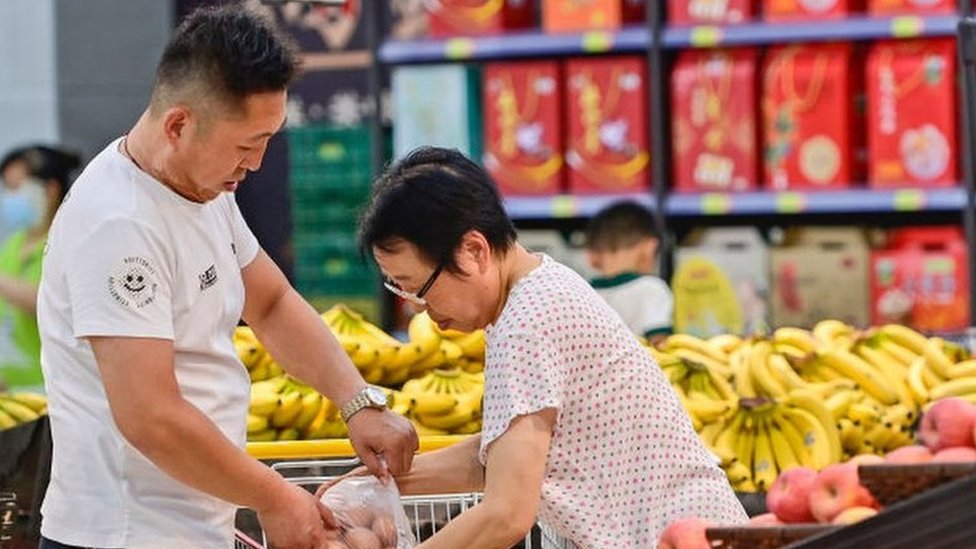China’s Consumer Inflation Hits 5-Month Low: Deflationary Pressures Persist
China’s economic landscape has entered a challenging phase, as consumer inflation recently hit a five-month low, signaling a prolonged struggle against deflationary pressures. Official data released for November revealed that the Consumer Price Index (CPI) rose marginally by 0.1% year-on-year, falling short of market expectations. This lackluster inflation growth, coupled with falling producer prices and sluggish domestic demand, underscores the complexities Beijing faces in steering its economy toward sustainable growth.
The Data: Decoding the Inflation Metrics
The latest figures from China’s National Bureau of Statistics (NBS) have raised alarms among economists. The CPI’s weak 0.1% year-on-year increase in November marks a stark deceleration from the previous months, suggesting that consumer demand remains tepid despite government efforts to stimulate economic activity. On the production side, the Producer Price Index (PPI) fell for the twelfth consecutive month, declining by 2.7% year-on-year, exacerbating concerns about deflationary spirals within the industrial sector.
Key Contributors to Low Inflation
- Food Prices: The food component, which constitutes a significant portion of China’s CPI, saw minimal growth, with pork prices—a staple in Chinese households—registering a modest 0.5% increase. This contrasts sharply with the double-digit increases witnessed during previous years of economic buoyancy.
- Energy Costs: Declines in global energy prices and subdued demand for industrial commodities have kept energy inflation muted.
- Consumer Spending: Persistent weakness in household consumption, particularly in discretionary spending categories such as travel and luxury goods, reflects broader uncertainty in the post-pandemic economic recovery.
/thetatva/media/post_attachments/wp-content/uploads/2023/08/china-stock-market_64915dfbccbaf.jpeg)
The Deflationary Challenge: Causes and Consequences
What is Driving Deflationary Pressures?
- Weak Domestic Demand: Consumer confidence in China remains low, hindered by concerns about unemployment, falling property values, and limited wage growth. Retail sales—a critical indicator of household spending—continue to underperform.
- Overcapacity in Manufacturing: Excess production capacity in industries such as steel, cement, and electronics has contributed to downward price pressures in the PPI, which often translates into lower consumer prices.
- Global Economic Slowdown: Reduced export demand, particularly from Western economies grappling with inflationary pressures of their own, has weakened China’s manufacturing sector.
- Property Sector Crisis: China’s real estate sector, once a pillar of economic growth, is mired in financial instability, further dampening investment and consumer confidence.
The Economic Implications of Prolonged Deflation
Deflationary trends can lead to a vicious cycle of reduced consumption, lower production, and rising unemployment. In China, prolonged deflation risks stalling its economic recovery and undermining Beijing’s ambitions to achieve its annual growth targets. Additionally, falling prices erode corporate profitability, discourage investment, and strain local government revenues.

Policy Responses: Can Beijing Reverse the Trend?
Recent Measures by the Chinese Government
The Chinese government has rolled out a series of policies aimed at combating deflation and stimulating economic growth:
- Monetary Policy Adjustments: The People’s Bank of China (PBOC) has cut interest rates multiple times in 2024 to encourage borrowing and investment. However, the effectiveness of these measures has been limited by weak consumer and business confidence.
- Fiscal Stimulus: Beijing has announced infrastructure spending programs and tax breaks for small and medium-sized enterprises (SMEs). While these initiatives provide short-term relief, they have not yet led to a sustained increase in demand.
- Support for the Property Sector: Targeted measures, such as reducing down payment requirements for homebuyers and easing restrictions on property purchases, aim to stabilize the real estate market. Yet, these steps have had mixed success in reviving the sector.
Challenges in Implementing Effective Policy
Despite these efforts, several structural factors limit the efficacy of China’s policy responses:
- High Debt Levels: Both corporate and local government debt remain elevated, constraining the scope for aggressive fiscal interventions.
- Global Market Conditions: A sluggish global economy limits export growth, traditionally a key driver of China’s economic expansion.
- Demographic Trends: An aging population and declining birth rates are creating long-term pressures on domestic consumption.

The Global Perspective: Implications for the World Economy
China’s deflationary struggles have far-reaching implications for the global economy. As the world’s second-largest economy and a major trading partner for many nations, persistent weakness in China’s demand can weigh heavily on global growth. Key areas of impact include:
- Commodity Markets: Falling demand from China has already depressed global prices for commodities such as oil, copper, and iron ore, affecting resource-dependent economies.
- Supply Chains: Weak producer prices in China can lead to reduced costs for imported goods in other countries, potentially amplifying global deflationary pressures.
- Currency Markets: The Chinese yuan has faced depreciation pressures amid sluggish growth, affecting trade balances and monetary policies worldwide.

Looking Ahead: The Path to Recovery
Economists are divided on whether China can effectively address its deflationary challenges in the near term. While some argue that structural reforms—such as liberalizing the financial sector and reducing overcapacity—are essential, others emphasize the need for more immediate stimulus measures to boost consumer confidence.
Potential Policy Directions
- Enhancing Social Safety Nets: Expanding healthcare, education, and pension systems could alleviate household financial anxieties and encourage spending.
- Reviving the Property Market: Broader measures to restore confidence in the real estate sector, including resolving debt issues among major developers, are critical.
- Boosting Rural Consumption: Policies aimed at increasing rural incomes and modernizing agriculture can tap into the vast, underutilized potential of China’s countryside.
- Strengthening International Trade Partnerships: Diversifying export markets and investing in Belt and Road Initiative (BRI) projects could provide new avenues for growth
Conclusion: Navigating Uncertainty
China’s journey through its current deflationary phase will require a delicate balancing act of short-term stimulus and long-term structural reforms. The stakes are high, not just for Beijing but for the global economy, which looks to China as a key engine of growth. As policymakers grapple with these challenges, the coming months will be crucial in determining whether the world’s second-largest economy can regain its momentum or remain ensnared in a prolonged period of economic stagnation.









